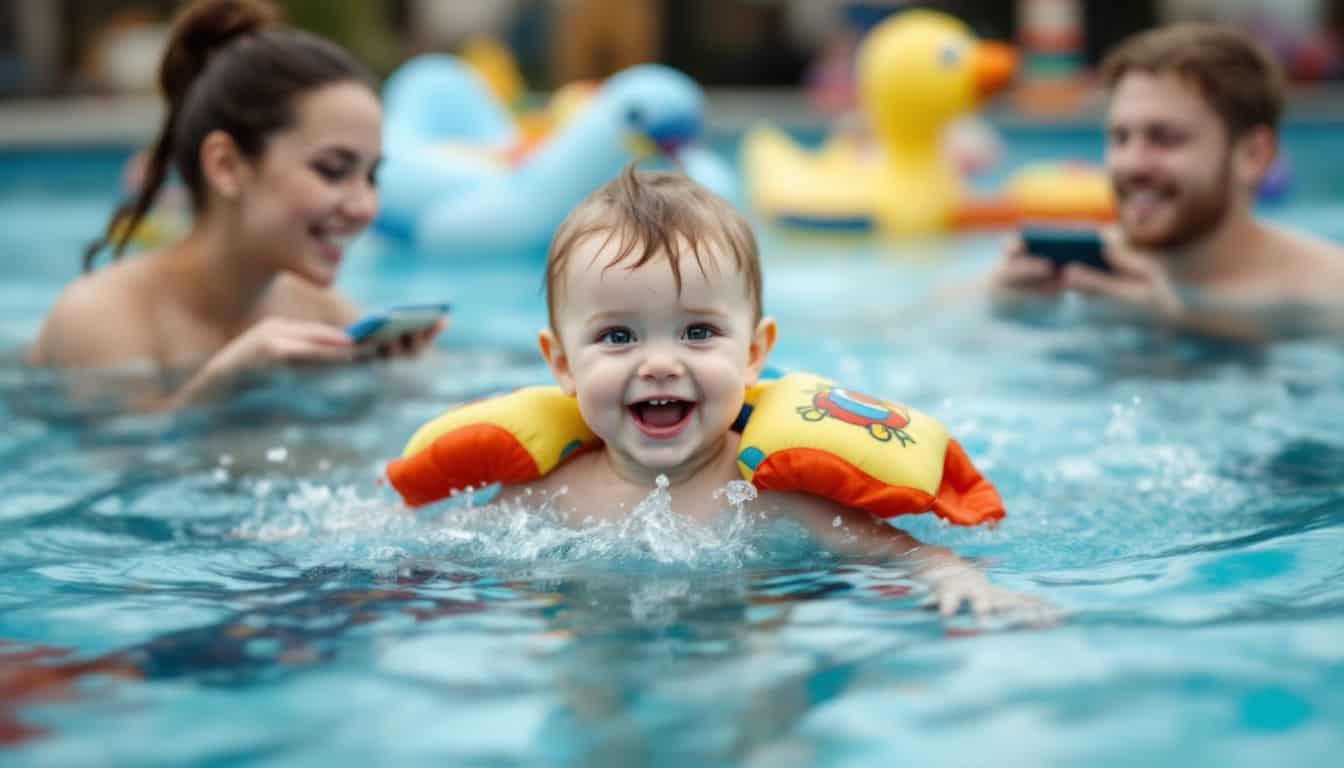Are you unsure about what age can you start swimming lessons for your child? The American Academy of Pediatrics (AAP) suggests kids as young as one year old can benefit from swim classes to build early water confidence and safety skills.
In this blog, you’ll learn how beginning swim lessons at the right age helps lower drowning risks, develop key physical abilities, and enhances emotional growth for your little swimmer.
Read on to discover five big reasons why an early plunge into swimming offers great benefits!
Key Takeaways
The American Academy of Pediatrics suggests swim lessons can start as early as age 1—but most kids begin closer to age 4, since they’re better at listening and following directions by then.
Starting swim lessons early builds kids’ strength, makes them feel safer in water, grows their confidence, and helps reduce drowning risks for kids between 1 and 4.
Parent-child swim classes help babies bond closely with parents or caretakers, making them feel safe and comfortable with someone they trust right next to them.
Choose swim programs that keep classes small, with just one instructor per four kids under age 5—also make sure the teachers have valid certifications in CPR and water safety.
Always stay within arm’s reach of young swimmers, using what’s called “touch supervision“, and pick life jackets approved by the Coast Guard to boost safety in the water.
Table of Contents
What Age Can Children Start Swimming Lessons?
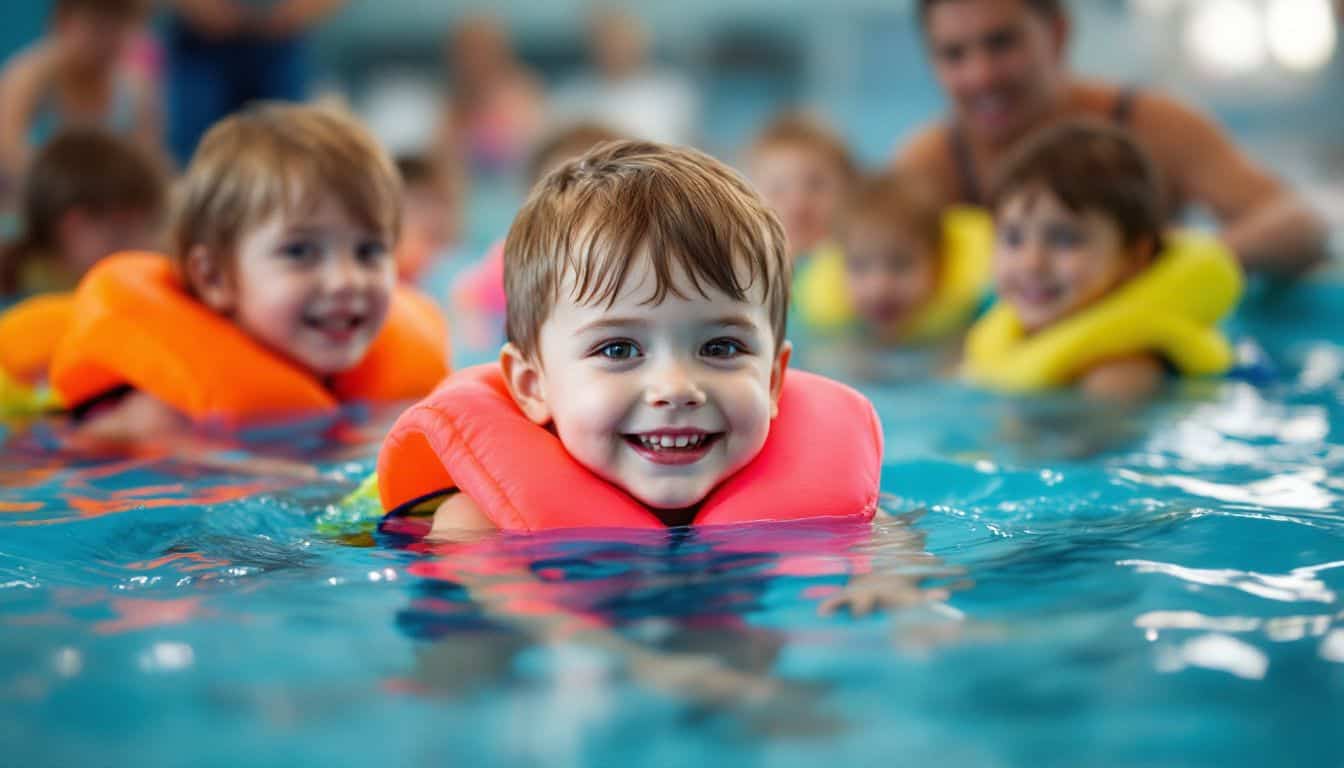
Most kids can start swimming lessons around age 4, when they have the focus to follow instructions. Some programs offer classes for babies as young as 6 months old, with a parent in the water to help build comfort and basic skills.
Recommended starting age for swimming lessons
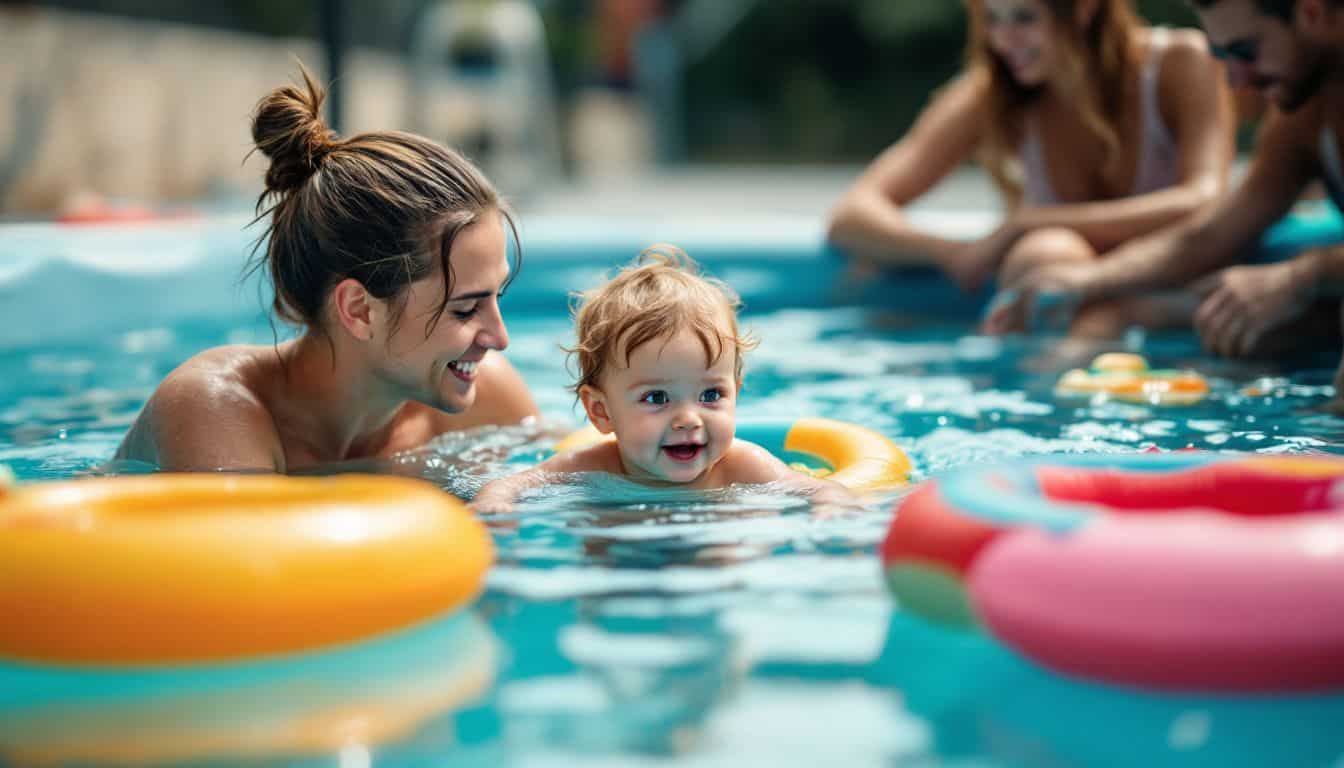
The American Academy of Pediatrics recommends starting swim lessons at age 1. Introducing your child early helps build their confidence in water, while you’re still right by their side.
Children aged 1-4 quickly pick up essential water survival skills, greatly reducing drowning risks. Swim teachers typically agree that these initial classes emphasize basic safety skills over perfect swimming techniques.
It’s best to choose programs with certified instructors trained to handle infants, in safe, carefully monitored pools.
By age 4, kids can usually handle structured swimming lessons Manchester. At this age, their minds and bodies are ready for clear direction and instructions.
With consistent practice, many children learn the front crawl around 5 or 6 years old. Still, the right timing depends on your child’s emotional readiness, comfort in water, and individual development.
Pediatricians also remind parents that swim lessons can’t replace close adult supervision at beaches or public pools.
Early swimming lessons serve as both a safety measure and a foundation for lifelong water enjoyment. The skills children learn at ages 1-4 can make the difference in water emergencies.
Factors that influence the right age to start
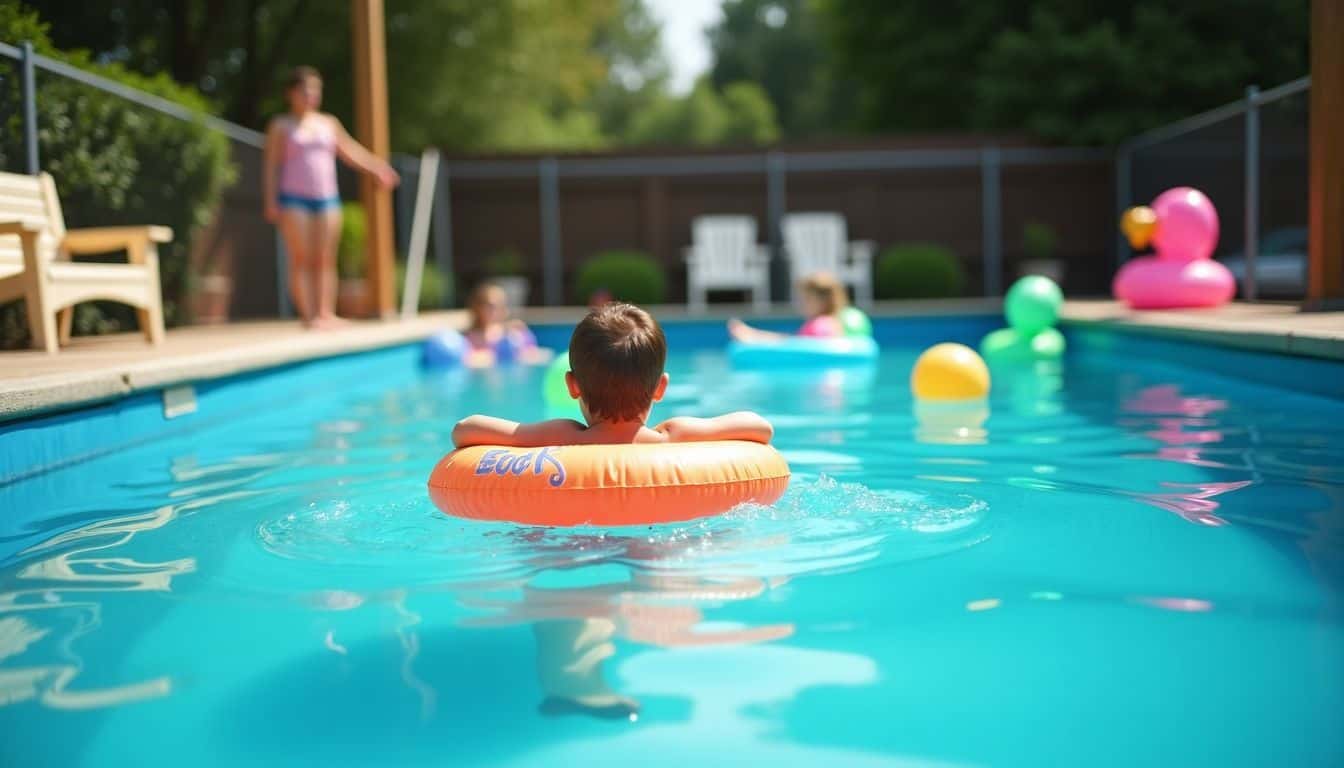
Figuring out the best time for your little one to start swim lessons depends on more than age alone. Each child is different—with unique strengths, abilities, and comfort with water. Here’s what you should keep in mind:
- Physical readiness matters—a lot. While babies can typically hold their heads steady by 4-6 months, they often lack strength for actual swimming moves. My daughter, for instance, couldn’t really kick effectively until around 18 months.
- Emotional readiness is just as important. Some kids eagerly splash in water, while others feel nervous or scared. Bath time is a helpful clue—observe if your child giggles or seems uneasy in water.
- Previous water experiences make early swimming easier. Babies who have fun at bath time usually adjust quicker at the pool. Regular playtime in water helps build their confidence before lessons start.
- Health conditions influence lesson timing. Kids with certain medical conditions may need approval from a doctor, or a bit more time, before they jump in.
- Motor skills are key. Simple milestones, like walking steadily and following basic instructions, make swimming lessons easier and more rewarding.
- Attention span affects how long your child can stick with lessons. Short, playful sessions are best for younger toddlers, who lose interest quickly.
- Your availability matters too. The American Academy of Pediatrics (AAP) stresses that adults should always supervise closely around water, especially with young kids.
- Finding qualified swim instructors is essential. Make sure teachers have proper first aid training and specialize in your child’s age group.
Benefits of Starting Swimming Lessons Early
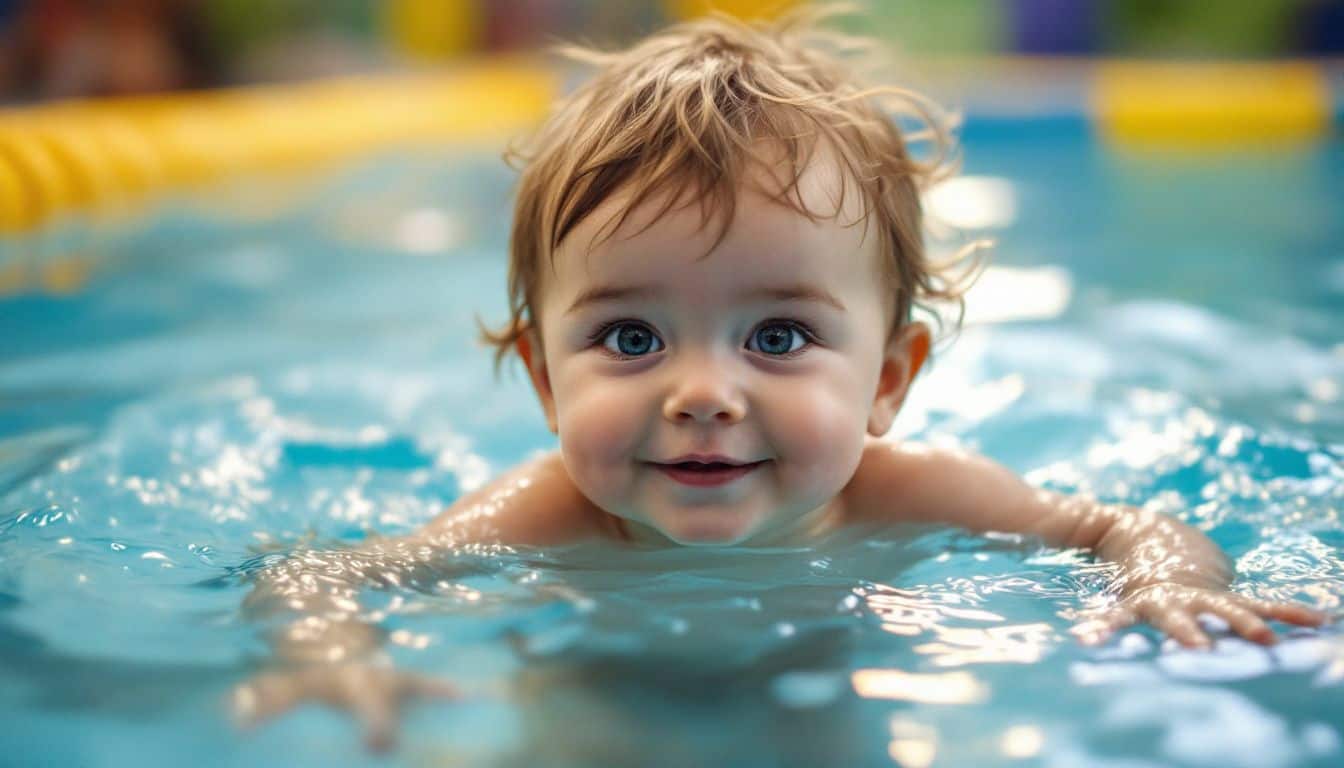
Early swim lessons offer huge gains beyond just water safety. Kids who swim early grow stronger muscles and sharper brains while building life-long skills.
Builds water confidence and safety skills
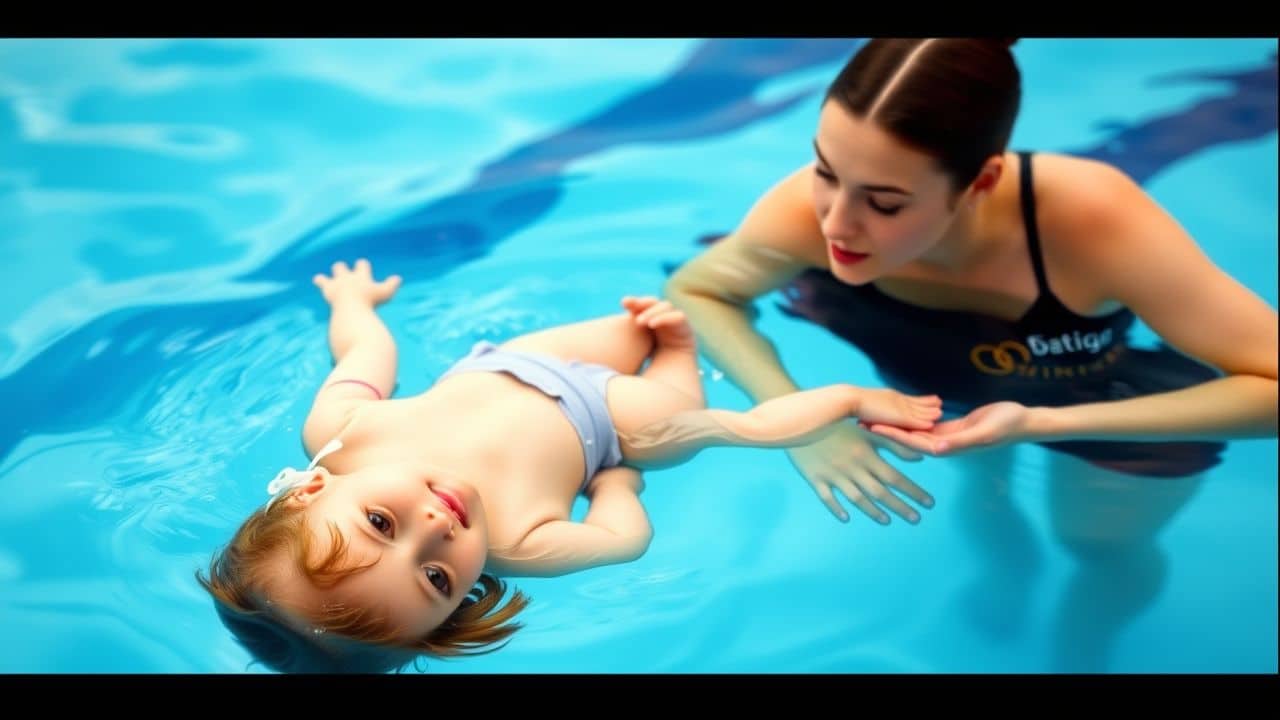
Swimming lessons get kids comfortable in water from a young age. Even babies as little as one year old can start learning skills that help protect them from drowning. I’ve watched my daughter go from timid and unsure—to bold and adventurous—in just a handful of lessons.
Kids learn essential water safety skills: floating on their backs, treading water, and safely climbing out of pools. They discover how to respect water but not fear it. Important basics like holding their breath, kicking legs, and moving arms lay a strong foundation for safety.
Children who feel confident in their swimming skills usually have more fun in the water. Every class brings more laughing, splashing, and playful comfort in the pool. A water watcher or swim instructor carefully leads children through enjoyable exercises, helping them build strength—and practice safety moves—at the same time.
Little ones overcome water worries that might otherwise stick around into older childhood. Now, here’s how swimming can boost both physical and emotional growth for small kids.
Enhances physical and cognitive development
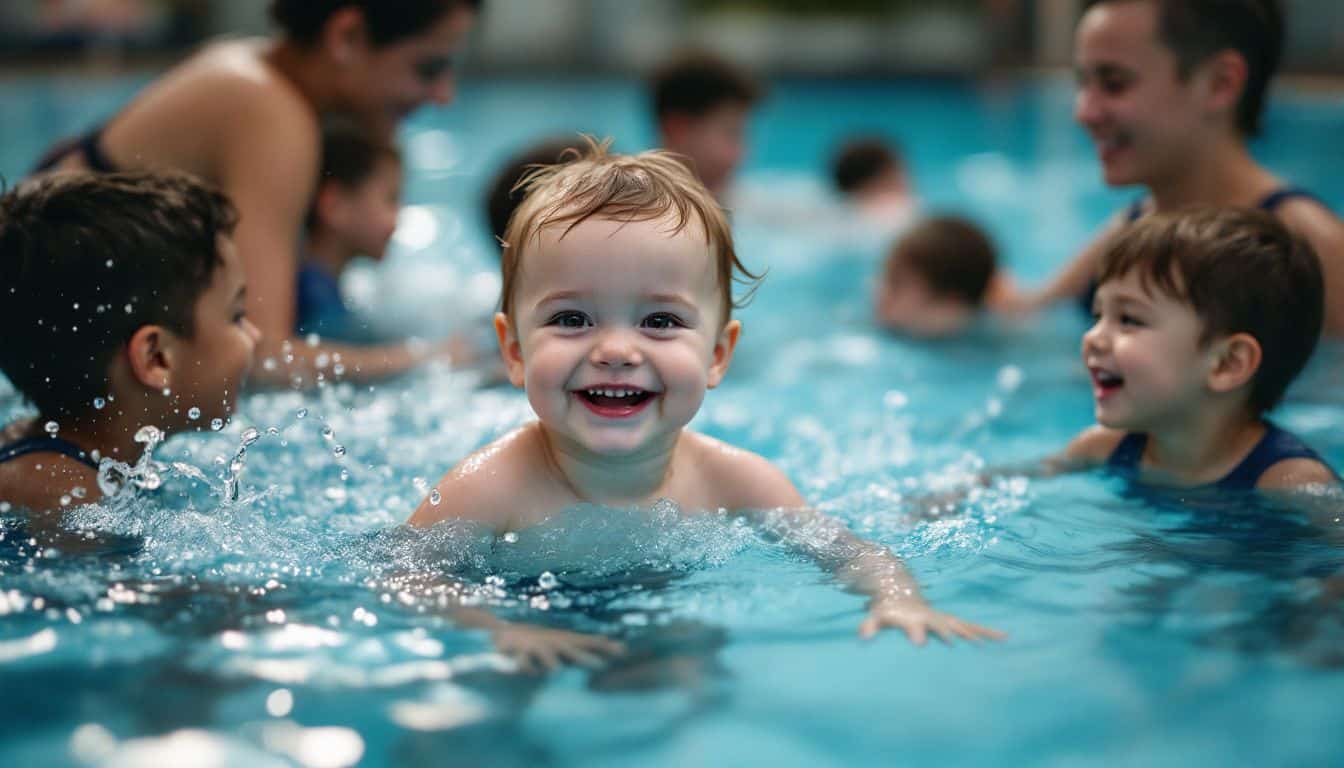
Kids grow in many wonderful ways through swim lessons. Starting early, between ages 1 and 4, builds muscle strength, boosts flexibility, and makes hearts healthier. Water offers gentle, natural resistance, helping little bodies grow stronger without putting stress on young joints.
Your kiddo will kick, pull, and splash—strengthening motor skills and having fun all at once! Moving underwater even sharpens spatial awareness and attention, boosting brainpower along the way.
Plenty of parents notice their tiny swimmers move more smoothly—both inside the pool and out.
The pool becomes a classroom where children learn with their bodies and minds simultaneously. Each kick and stroke builds not just muscles, but neural pathways.
The social side of swim class also helps young brains grow. Kids chat with teachers and fellow swimmers, boosting their listening skills and learning to follow directions. That extra practice helps children grow confident near water, reducing drowning risks along the way.
Pool games encourage teamwork, sharing, and waiting turns—skills kids take straight into preschool and beyond. Having instructors closely supervise gives comfort and security, helping kids feel safe emotionally during each lesson.
Many parents even notice their little swimmers spend less time on screens, choosing active play after enrolling in swim lessons.
Parent-Child Swim Classes
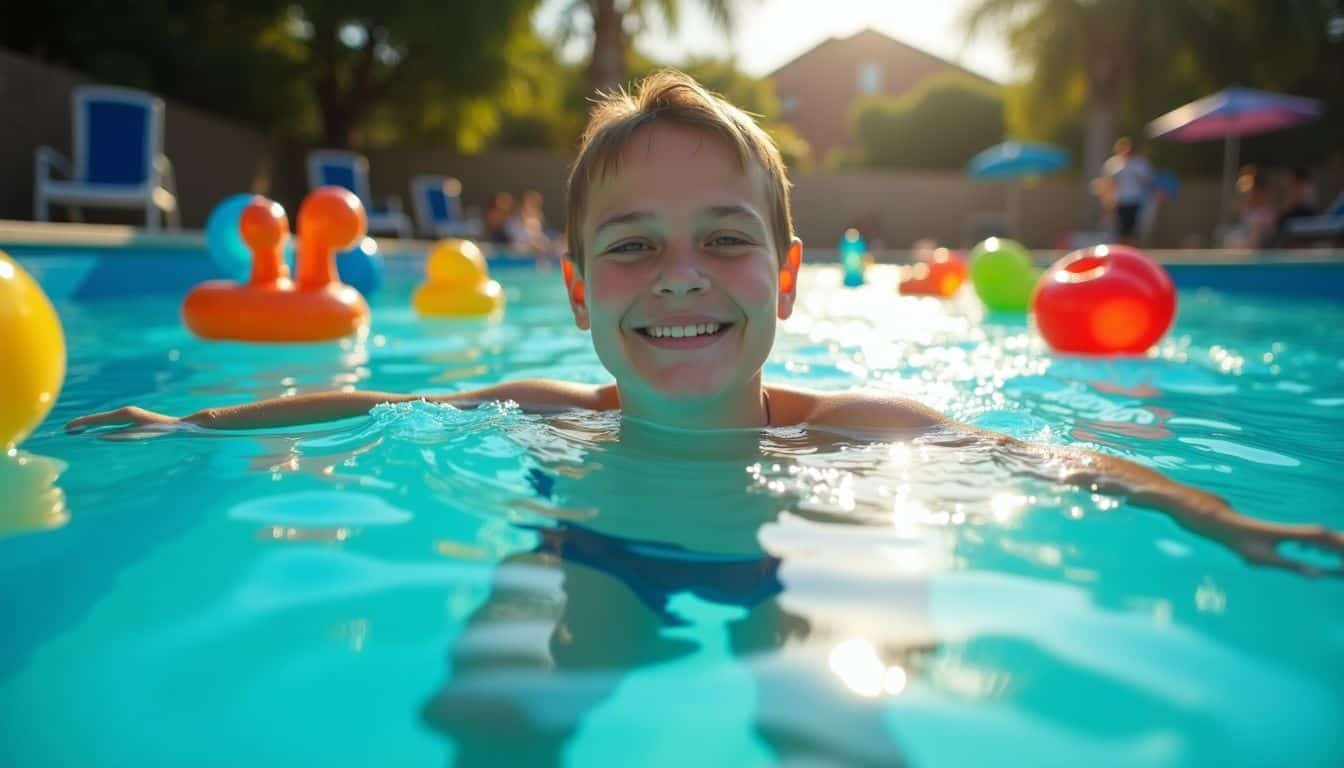
Parent-child swim classes create a special bond while babies learn vital water skills. These sessions offer a safe space for little ones to splash around with a trusted adult by their side.
Ideal for babies and toddlers
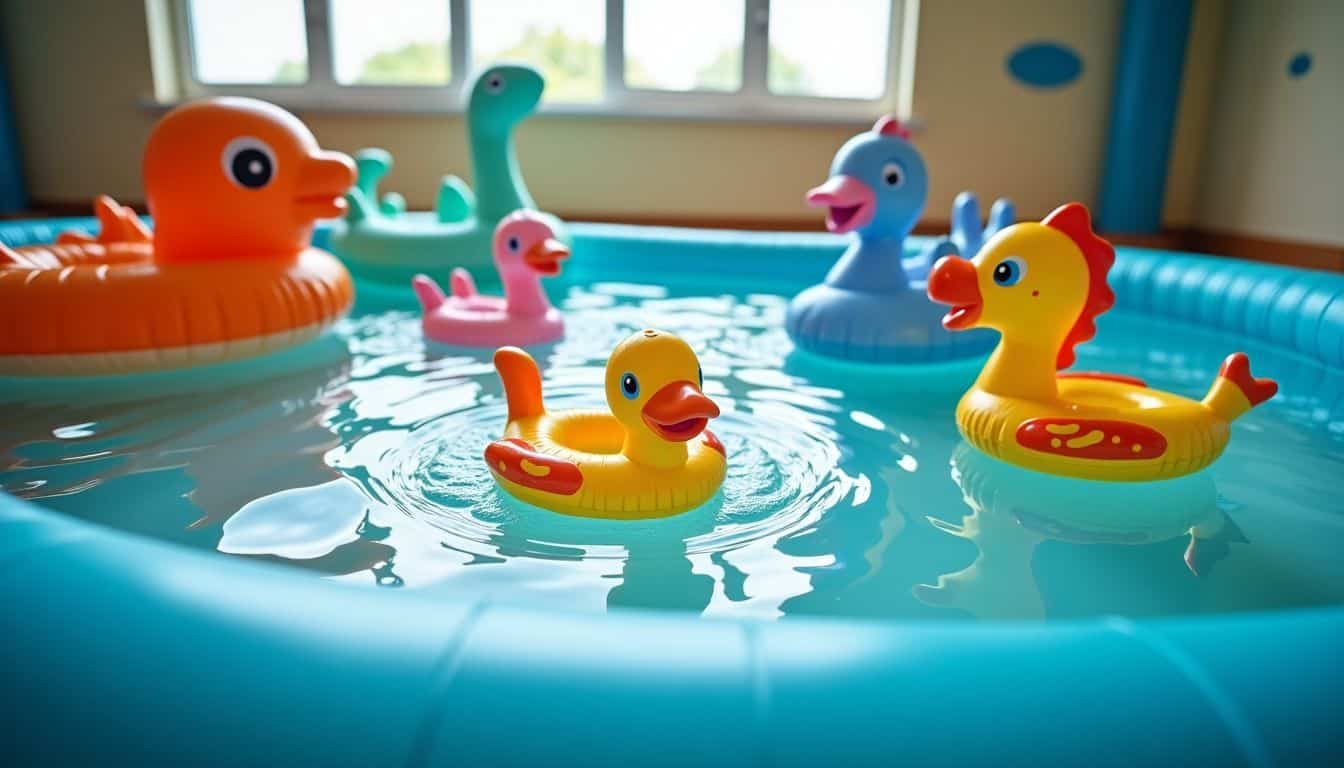
Babies and toddlers truly blossom in swim classes made specifically for their age group. The American Academy of Pediatrics recommends starting swim lessons around age 1 to lower the risk of drowning.
Early swim sessions usually focus on playful water activities, instead of formal swimming techniques. Infants practice floating safely, blowing tiny bubbles, and kicking their little legs in comfortable, warm pools.
Most classes ask parents to provide “touch supervision”, meaning you always stay close enough to reach your child quickly.
Through these playful lessons, children gain confidence in water and improve their motor skills along the way. Your child grows comfortable in the pool through songs, gentle movements, and fun games.
Spending this relaxed time together also strengthens the connection between you and your baby. Many YMCA locations offer baby swim classes, led by instructors trained specifically in child development.
The ideal swim program emphasizes pool safety above all, but still keeps it entertaining and enjoyable for you and your little swimmer.
Benefits of parent involvement in early swim lessons
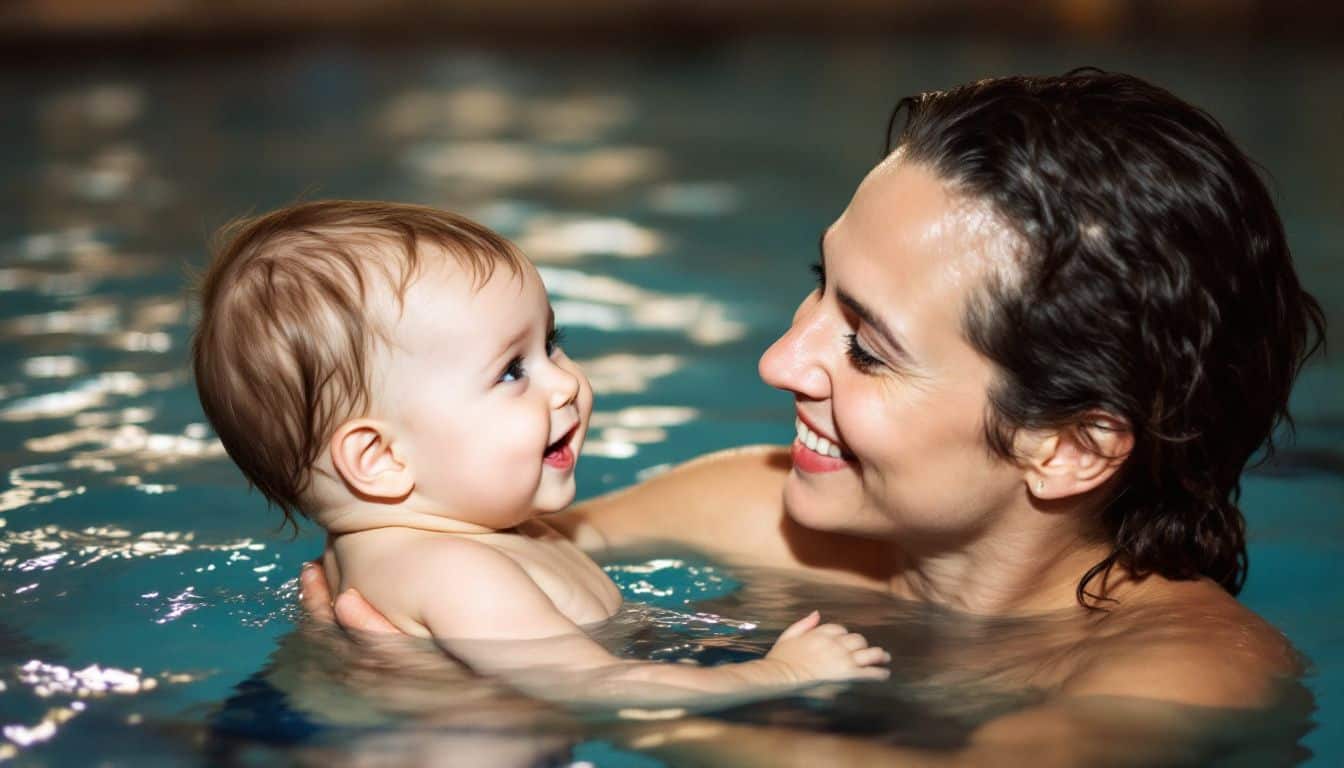
Infants and toddlers pick up essential water skills early, and parents play a huge role in these swim classes. Your involvement in the water creates a comfortable, secure space for your child to explore new sensations.
Most little ones feel calmer and happier with mom or dad close by, boosting their confidence in the water faster. Plus, these swim sessions strengthen your parent-child connection, with shared smiles, eye contact, and gentle physical touch.
Parents benefit just as strongly from swim lessons as kids do. You’ll pick up practical tips on proper holding techniques and important water safety strategies directly from experienced swim instructors.
Plenty of caregivers report feeling more confident handling water activities after attending classes with their child. These joint experiences can help cut screen time and replace it with active, healthy bonding moments.
Skills such as floating techniques and the right way to use a life jacket establish a strong foundation, helping prevent drowning long after lessons finish.
Choosing the Right Swim Program

The right swim program can make all the difference in your child’s water journey. Look for classes with small student-to-teacher ratios and staff who hold proper swim teaching licenses.
Qualifications of instructors
Swim instructors must have proper training through nationally recognized swimming programs. This ensures your child stays safe and learns effectively at every stage. The American Academy of Pediatrics highlights that skilled swim teachers help children progress better in lessons.
Choose instructors who hold up-to-date CPR and First Aid certifications—these skills can be lifesaving during water emergencies. Effective instructors know exactly how to protect toddlers from drowning risks.
They can demonstrate rescue methods clearly and in ways suited for young children. Great teachers blend playful activities with structured skill building, keeping lessons fun and productive.
Before signing up, parents need to ask about an instructor’s background and past teaching experience. Plenty of YMCA locations offer swim classes taught by experienced staff, familiar with skills appropriate for various ages.
Safety always remains top priority in swimming lessons, making instructor choice truly important. Selecting a swim program involves checking instructor credentials, plus factors like class sizes and clear safety guidelines.
Class size and safety protocols
Class size and safety rules directly impact your child’s swimming success. Smaller groups mean individual attention, while clear safety policies keep your kid safe around water.
- Small groups let instructors focus more closely on your child’s progress—I noticed my daughter improved quickly in a class with just four kids, unlike her friend, who struggled in a packed class of twelve.
- Experts recommend one instructor for every four children under age five, since toddlers need constant supervision to reduce drowning risks.
- Good swim schools ask parents to stay within arm’s reach during lessons for babies and toddlers—my local YMCA requires parents to sit right by the pool for all classes with kids younger than three.
- Always choose swim programs with trained lifeguards on duty during each lesson, since lifeguards provide extra protection in addition to instructors.
- Reliable swim centers clearly post guidelines about running, diving, and entering the pool area—these policies help prevent accidents outside lesson times.
- Confirm all instructors have CPR and water rescue skills, as these abilities save lives in an emergency.
- Great swim programs check water temperature and cleanliness daily to protect young children from hypothermia, since smaller kids lose heat quickly.
- Top swim schools insist children use appropriate swimming aids like life jackets or floaties based on their abilities—my son wore a life jacket until he felt confident in the water.
- Ask to see the pool’s emergency plan and confirm instructors regularly practice emergency drills to stay prepared.
- Strong swim programs track your child’s swimming skills carefully and note each milestone reached, helping spot any child who needs extra guidance early.
Tips for Water Safety During Swim Lessons
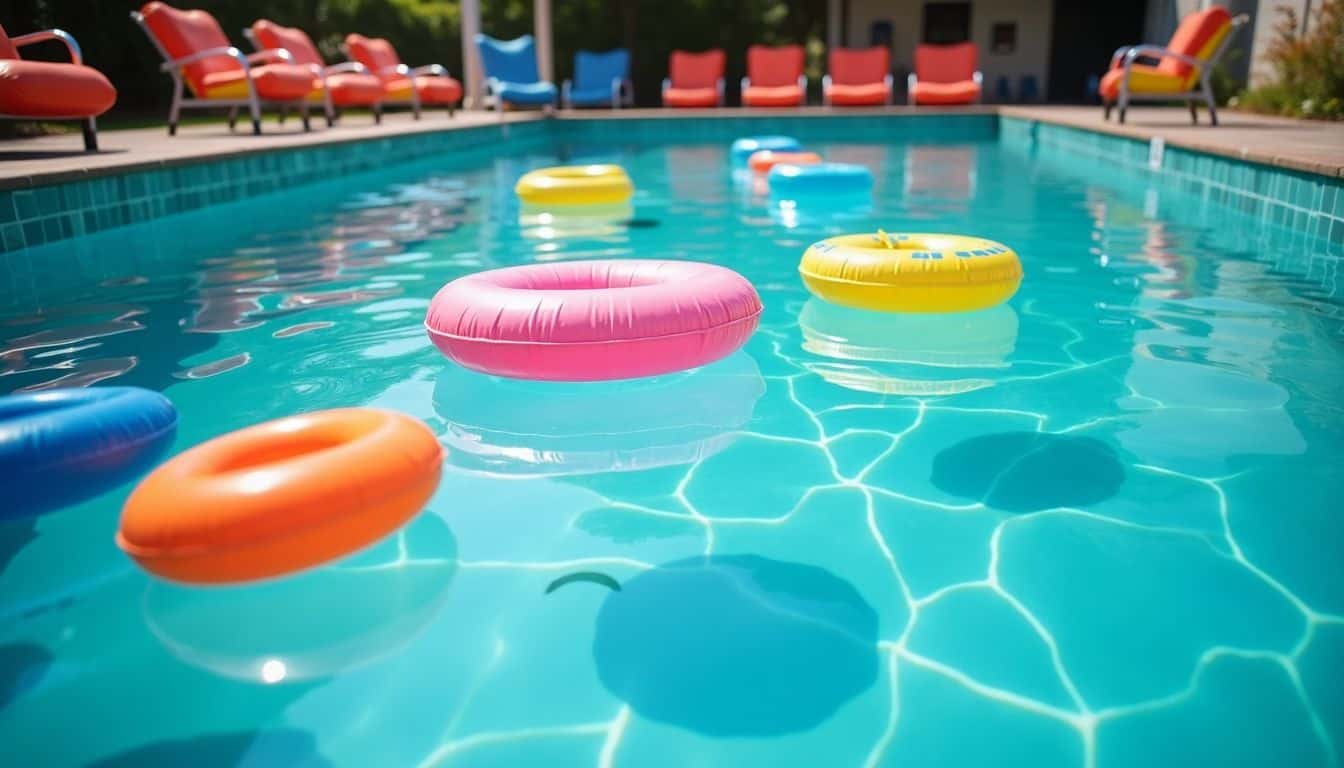
Safety comes first during swim lessons, so parents must stay alert and watch their kids at all times. Proper swim aids like life vests can boost confidence while kids learn vital water skills in the pool.
Supervision guidelines for parents
Always closely watch your kids whenever they’re near water. Statistics show 69% of drownings involving children under five occur when parents aren’t expecting trouble. During swimming lessons, practice “touch supervision“—staying within arm’s reach—to help kids learn better and build confidence safely.
At pool gatherings, avoid alcohol, since even a little can slow reaction times and make you less alert. For group swims, choose one adult to serve as a dedicated “water watcher“, carefully monitoring the children without distractions.
Pick someone who can respond fast, knows basic CPR, and understands rescue techniques—just in case.
Giving your child your full attention around water matters more than swimming badges or skill levels. Staying alert can make all the difference.
Importance of life jackets and floatation devices
Life jackets are lifesavers during swim lessons—especially for little kids or newbies around water. Jackets approved by the U.S. Coast Guard offer the safest protection from drowning, whether your child is a toddler or a bit older.
Before letting your kid into the pool or lake, parents should make sure the jacket fits just right. Your child’s safety relies on using flotation devices correctly, as they build up their swimming skills step-by-step.
Swim instructors need to explain clearly, starting from the first lesson, why these safety items matter. That way, kids form healthy water habits early and keep them going into their teen years.
Learning to swim also means knowing exactly how and at what times to wear safety gear—whether at pools, bath time, or even lakes and beaches. Lots of YMCA locations insist kids wear life jackets at beginner classes—that’s part of their plan to stop drowning accidents.
Flotation gear also gives kids emotional support; they feel braver, calmer, and happier in the water.
Even shallow spots, like tiny whirlpools or kiddie pools, need safety equipment. Good flotation support makes kids—from infants through teens—feel comfortable and secure, as they learn skills that keep them safe in water throughout life.
How Will Children’s Swimming Instruction Evolve in 2025?
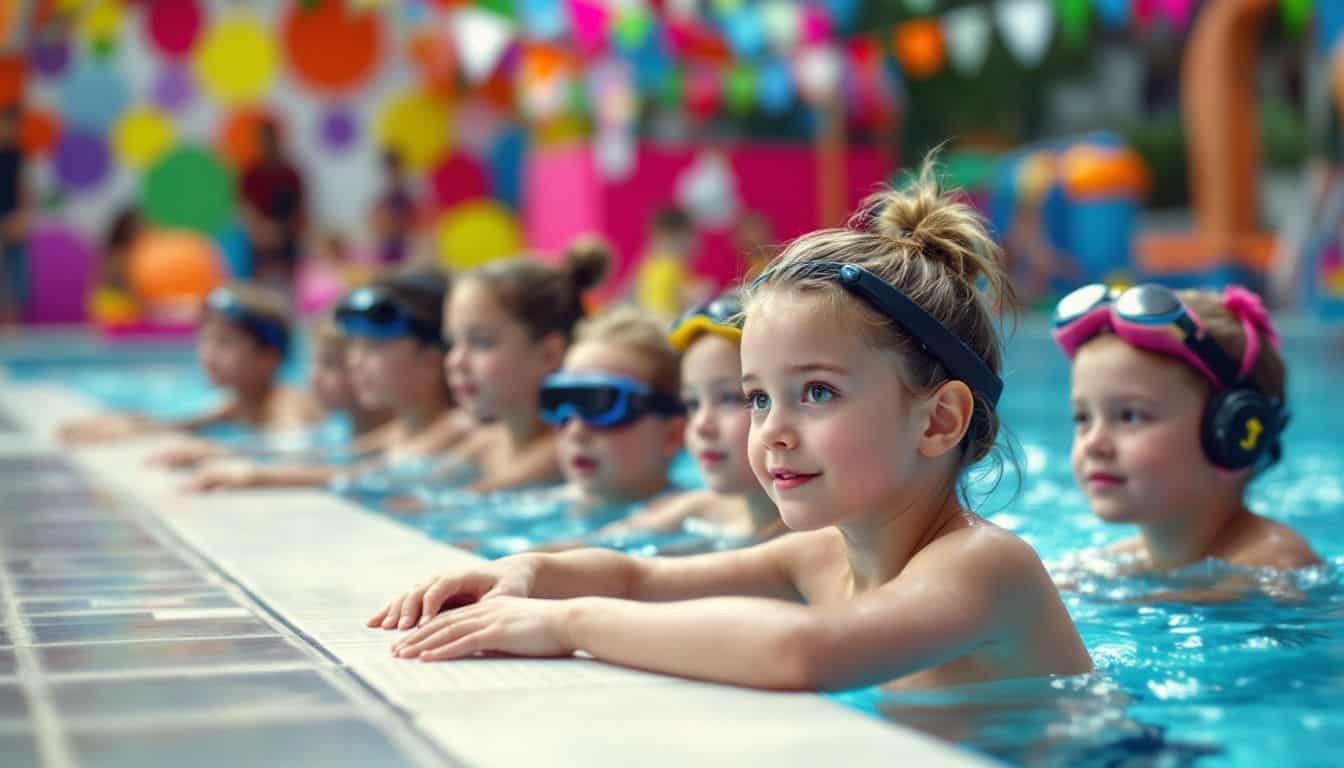
Swimming classes are set to transform significantly by 2025. New tech tools will make lessons safer and more exciting for kids of every age group. Virtual reality could soon help kids practice swimming strokes—long before they enter a pool.
Smart wearable gadgets may even track a child’s progress, sending real-time updates straight to parents. Each child’s unique skills and worries will shape how swim lessons are planned, creating a more personal experience.
Safety will stay the number-one priority, especially since drowning risks remain high for toddlers. Swim schools will increasingly blend essential water safety lessons into regular swimming activities.
Programs will mix playful water games with important skills, keeping children entertained as they learn. Many YMCAs and local pools will offer dedicated classes for infants, older children, and teens.
Parents might also get a chance to learn CPR themselves, as an added benefit of enrolling their kids in swim classes before taking them swimming on vacation.
People Also Ask
At what age can babies begin swimming lessons?
Babies can safely begin water activities around 6 months, although certain programs welcome infants even younger. Early lessons mostly help babies feel relaxed in the water—real swimming techniques come later. Typically, parents join during these sessions, turning water play into fun bonding time, either in the pool or even your bathtub at home.
How can swimming lessons help toddlers avoid drowning?
Swimming lessons teach toddlers basic water safety and survival skills, sharply reducing the risk of drowning. These early courses build confidence, showing young kids how to float or move safely in water, giving them tools they could use during an emergency.
What swimming skills can parents expect at each age stage?
Babies first learn comfort in water and basic floating skills. Toddlers progress to simple kicking and arm movements, using gentle support. School-age kids usually start learning basic swimming strokes, while teens further sharpen their techniques and develop stronger endurance. Each child learns at their own natural pace.
How can I tell if my child is emotionally ready for swimming lessons?
Check if your child can easily follow simple instructions and feels comfortable spending short periods away from you. A qualified swimming instructor can help figure out if your child is ready emotionally. Most kids reach this stage between ages 3 and 5—but remember, each child develops differently.
What details should parents consider when choosing a swim instructor for young kids?
Look for instructors trained specifically in teaching young children. A great instructor creates a fun and welcoming atmosphere, while prioritizing safety at every step. They should combine water safety skills with playful activities—making sure your child looks forward to every swimming session.
